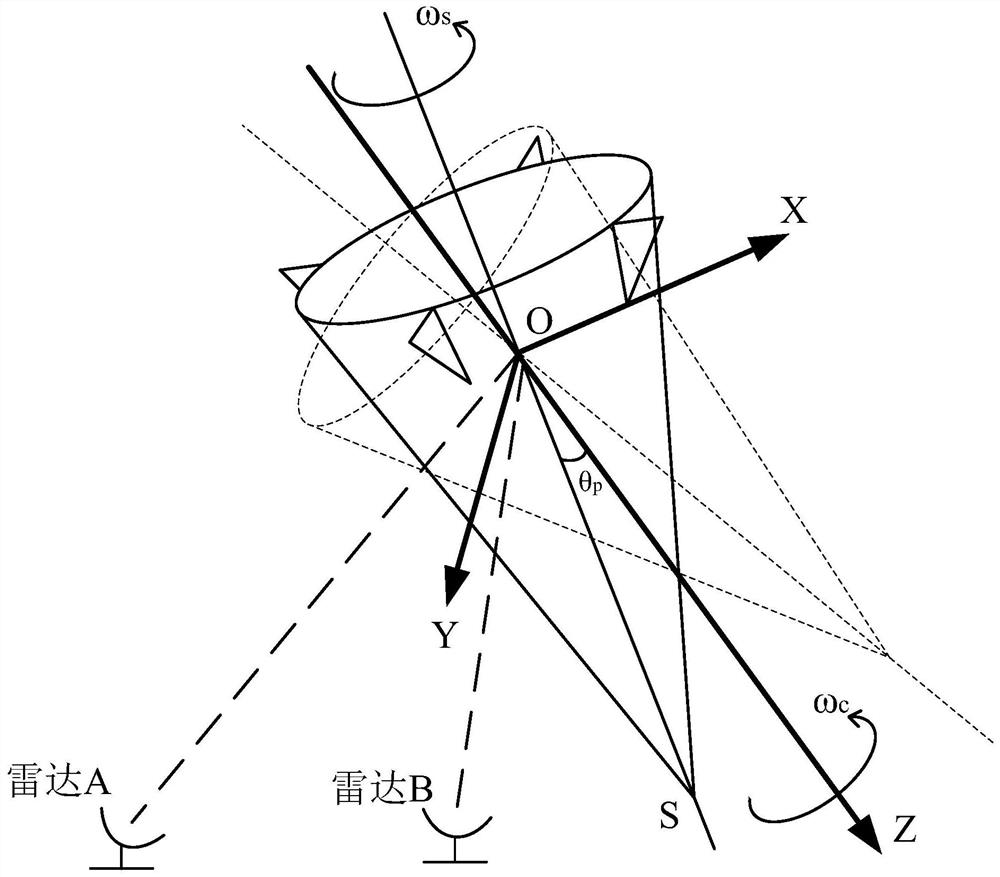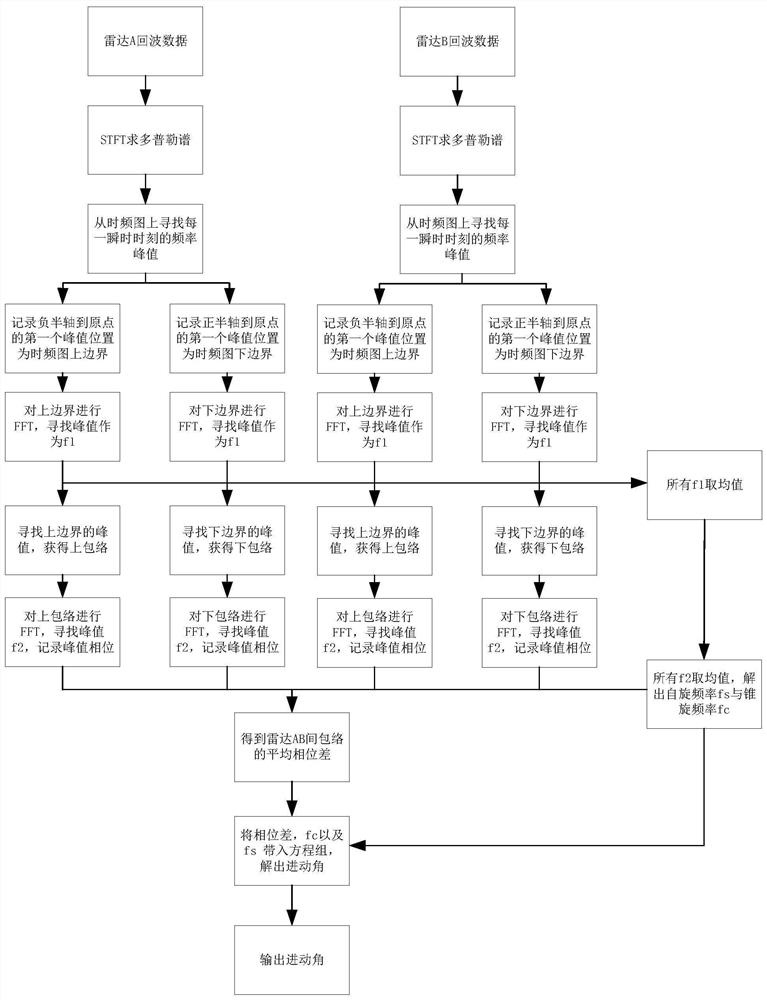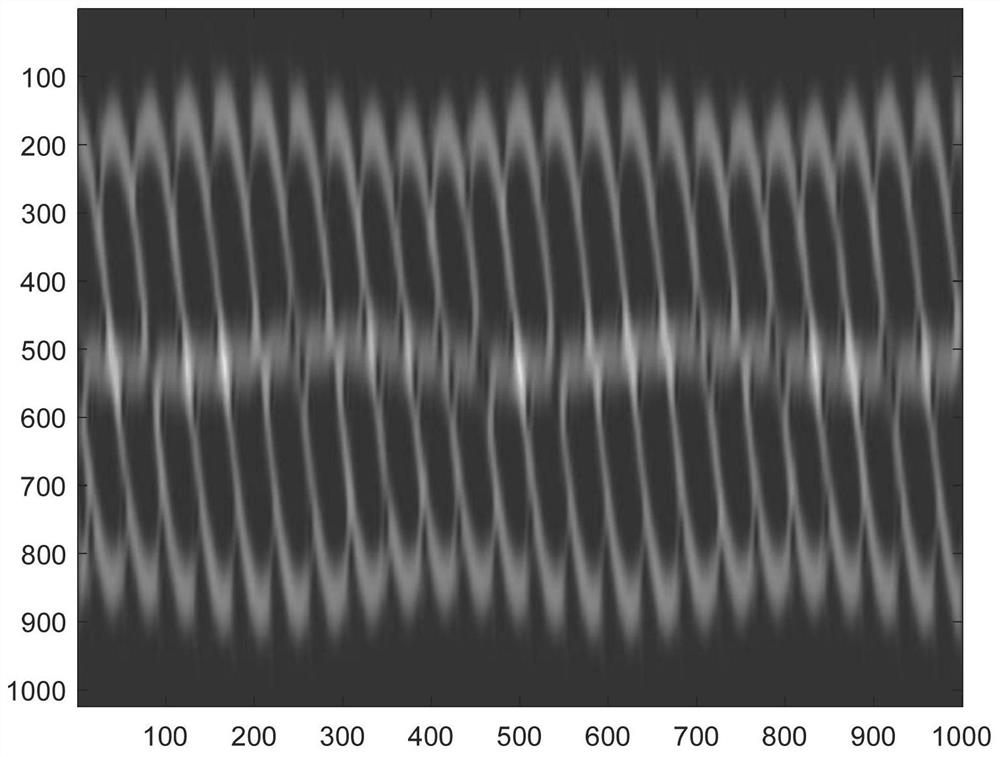Method for estimating precession parameters of middle-section target of ballistic missile
A technology for parameter estimation and ballistic missiles, applied to radio wave measurement systems, instruments, etc., can solve the problem of low recognition ability of true and false targets, and achieve the effect of improving recognition ability
- Summary
- Abstract
- Description
- Claims
- Application Information
AI Technical Summary
Problems solved by technology
Method used
Image
Examples
specific Embodiment approach 1
[0114] Specific implementation mode one: combine figure 1 , 2 , 3, 4, 5, 6, 7, and 8 illustrate this embodiment, and the specific process of a method for estimating the precession parameters of a ballistic missile mid-stage target in this embodiment is:
[0115] Such as figure 1 As shown, two radars (hereinafter referred to as radar A and radar B) are used to detect the target in the middle of the ballistic trajectory. The coordinate system OXYZ is established with the target center of mass O as the origin and the precession axis OZ as the Z axis. The warhead around the axis of symmetry OS at an angular velocity ω s Do spin motion, and at the same time its symmetry axis OS revolves around the precession axis OZ at an angular velocity ω c Cone motion, the included angle between radar A line of sight OA and precession axis OZ is θ A , the angle between the line of sight OB of radar B and the precession axis OZ is θ B , the angle between the axis of symmetry OS and the axis...
specific Embodiment approach 2
[0154] Specific embodiment 2: The difference between this embodiment and specific embodiment 1 is that in the step 1, the three-dimensional coordinates of the target relative to the radar A are recorded [X A ,Y A ,Z A ], and the three-dimensional coordinates relative to radar B [X B ,Y B ,Z B ]; then calculate the cosine value COS of the angle ∠AOB between radar A relative to the target direction and radar B relative to the target direction AB , the specific formula:
[0155]
[0156] Other steps and parameters are the same as those in Embodiment 1.
specific Embodiment approach 3
[0157] Specific implementation mode three: the difference between this implementation mode and specific implementation mode one or two is that in the step five, the method obtained by using the step three and obtained in step 4 Calculate the target spin frequency The expression is:
[0158]
[0159] Other steps and parameters are the same as those in Embodiment 1 or Embodiment 2.
PUM
 Login to View More
Login to View More Abstract
Description
Claims
Application Information
 Login to View More
Login to View More - R&D
- Intellectual Property
- Life Sciences
- Materials
- Tech Scout
- Unparalleled Data Quality
- Higher Quality Content
- 60% Fewer Hallucinations
Browse by: Latest US Patents, China's latest patents, Technical Efficacy Thesaurus, Application Domain, Technology Topic, Popular Technical Reports.
© 2025 PatSnap. All rights reserved.Legal|Privacy policy|Modern Slavery Act Transparency Statement|Sitemap|About US| Contact US: help@patsnap.com



